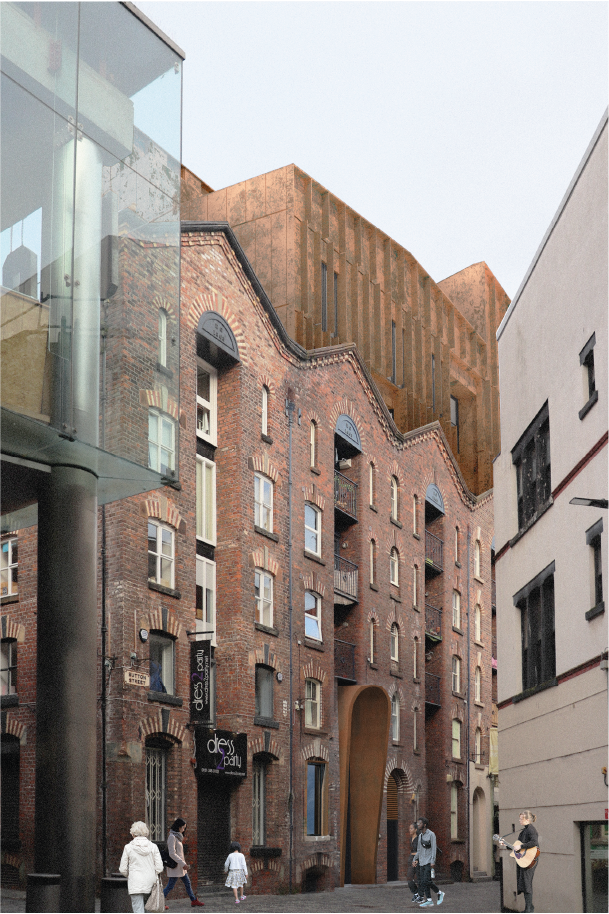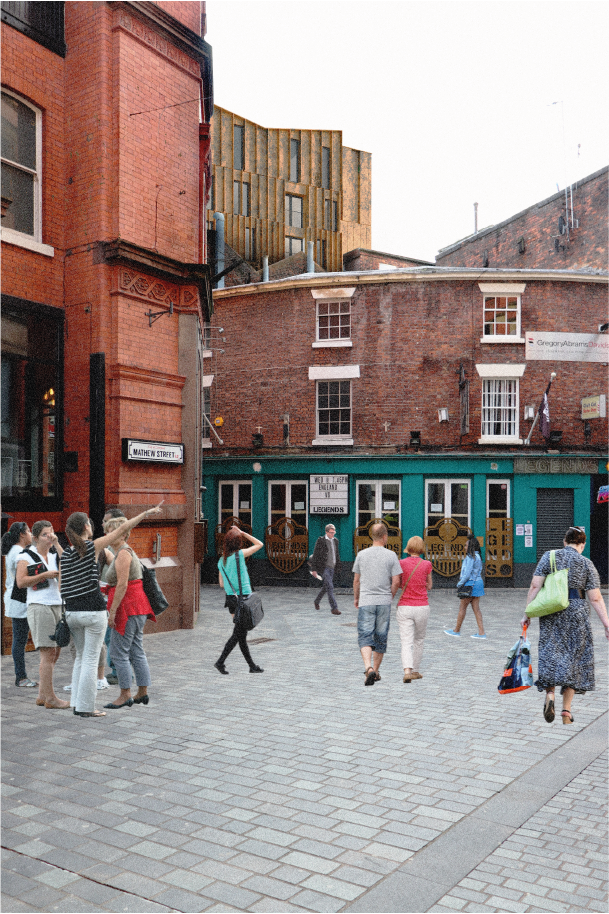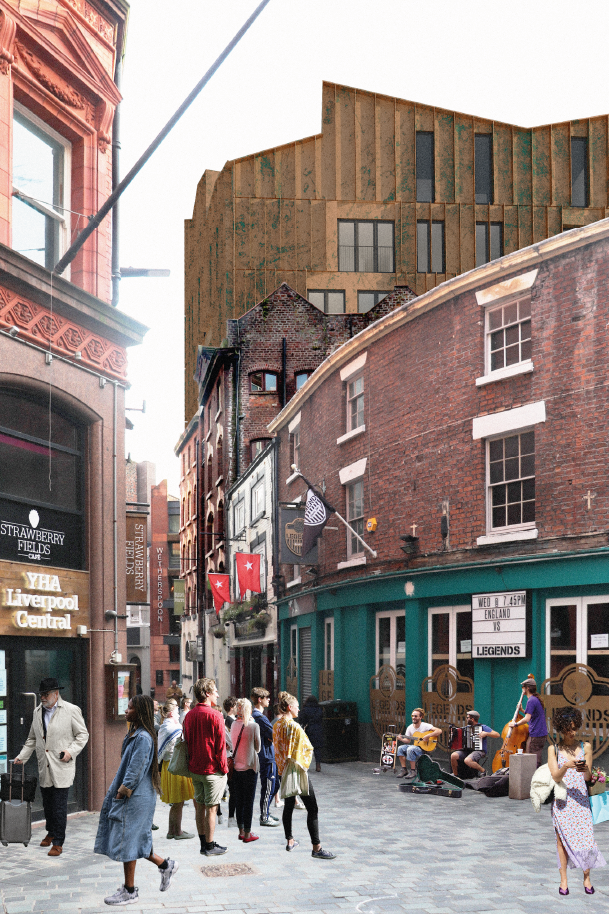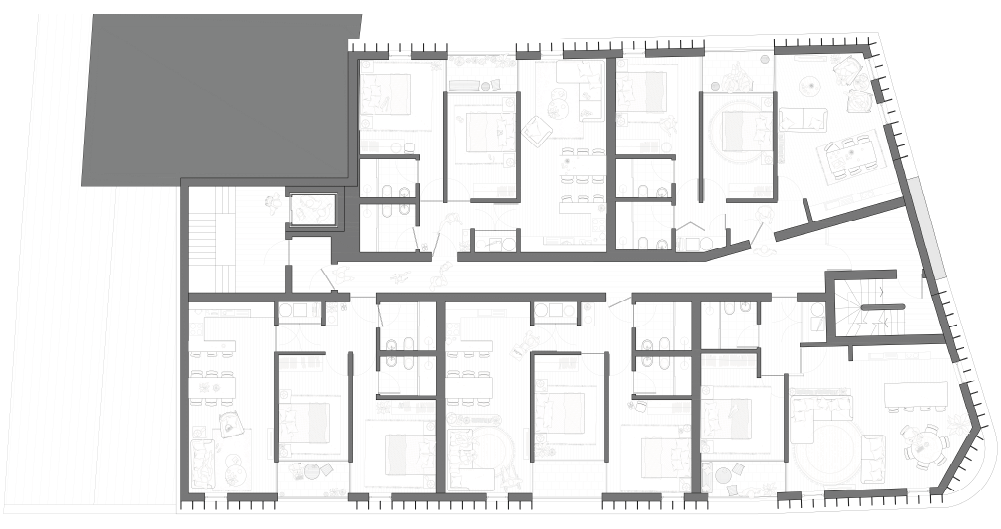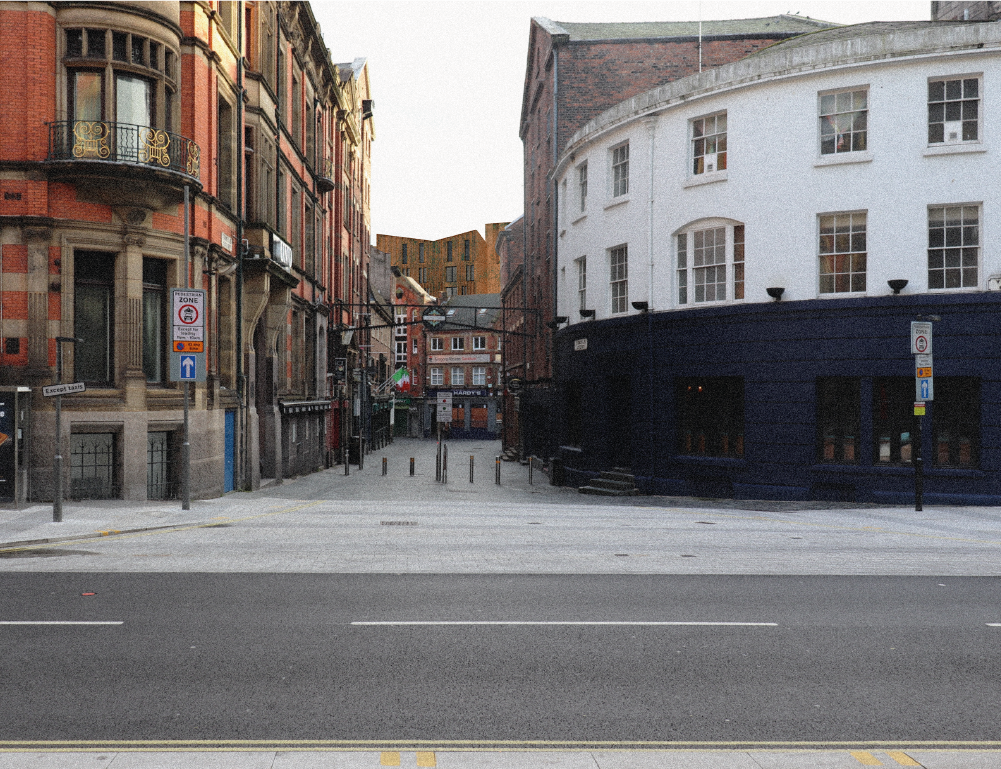Rainford Gardens
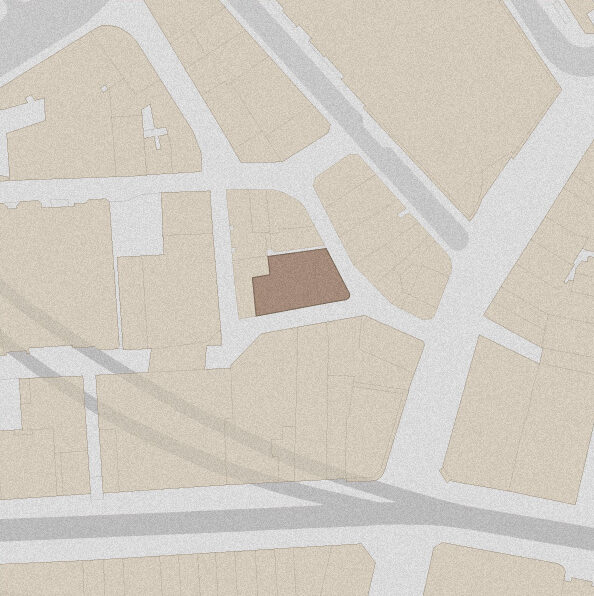

Rainford Gardens is situated in a former warehousing district of central Liverpool, now known as the Cavern Quarter in reference to the iconic eponymous venue which was located on Mathew Street. Baker House is a five-storey plus basement C19 former warehouse building currently in use as a bar, nightclub, and residential apartments. The proposed development adds a three-storey rooftop extension comprising residential apartments, together with change of use at basement, ground, and first floors to comprise a hostel and apart-hotel, with associated cafe-bar.
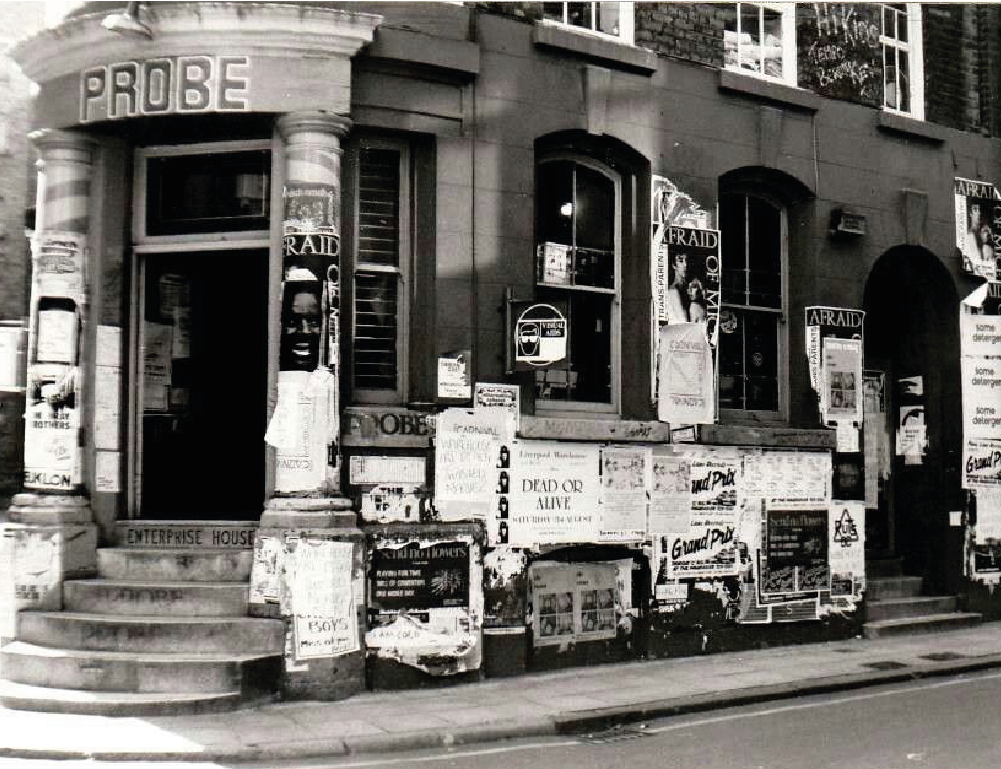
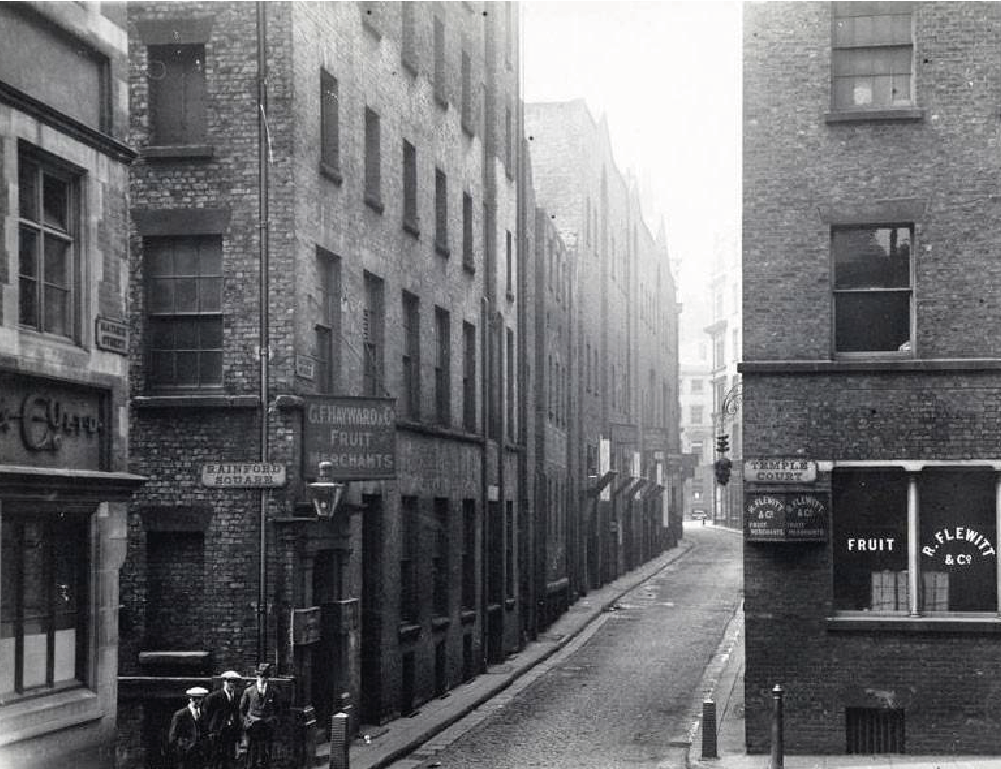
Although not listed, the site has cultural provenance being the former home of Probe Records, identified in the adopted Williamson Square and Cavern Quarter SPD as one of three points in the ‘golden triangle of punk’ - the other two being the former Armadillo Tea Rooms and legendary venue Eric’s. Baker House played a significant part of the early 80s Liverpool music scene, cradle to such bands as Echo and the Bunnymen, and the Teardrop Explodes, so evocatively captured in Dave Haslam’s book Searching for Love (Confingo Publishing, 2020). The Cavern Quarter now forms part of the Castle Street conservation area.
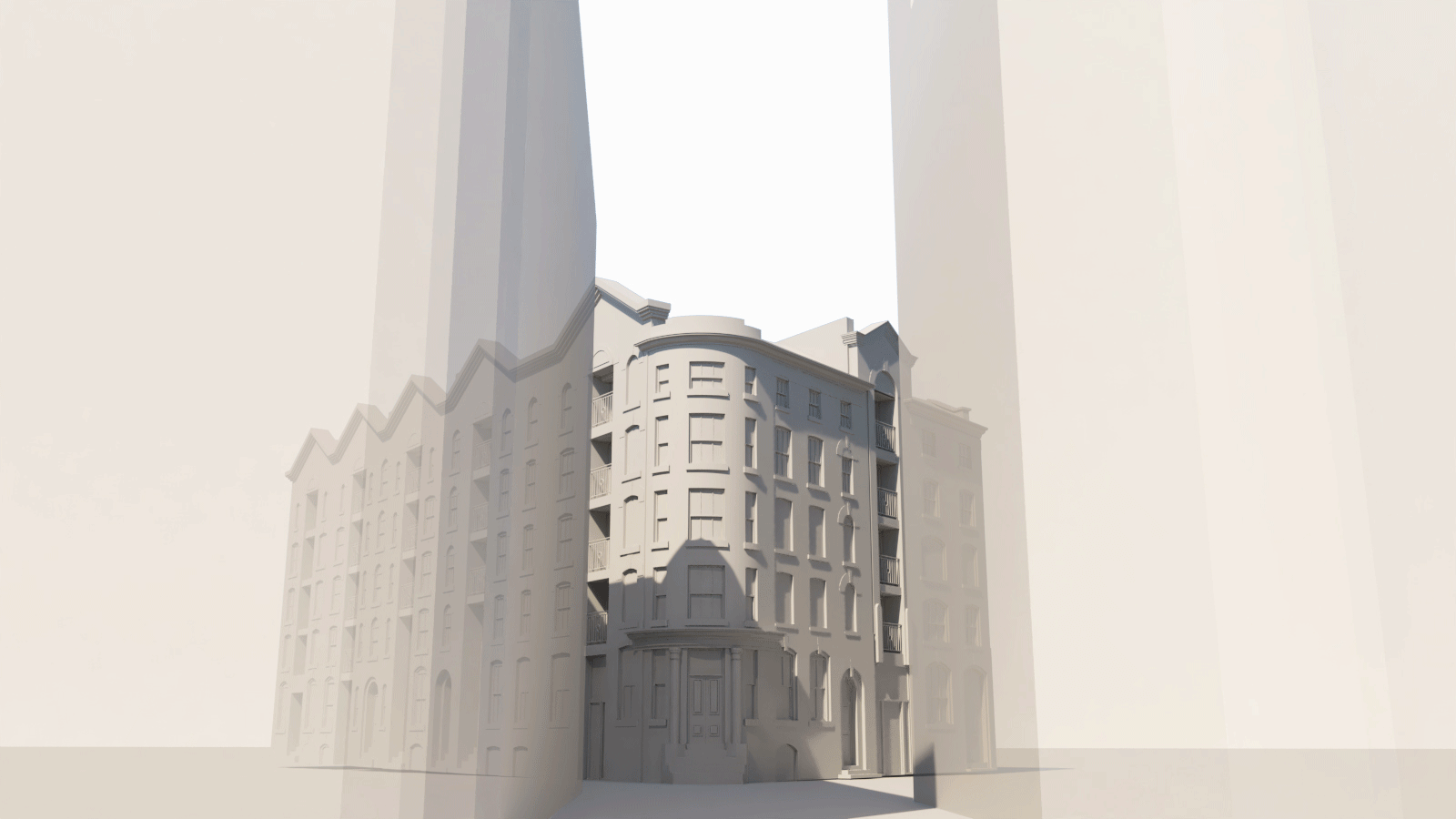
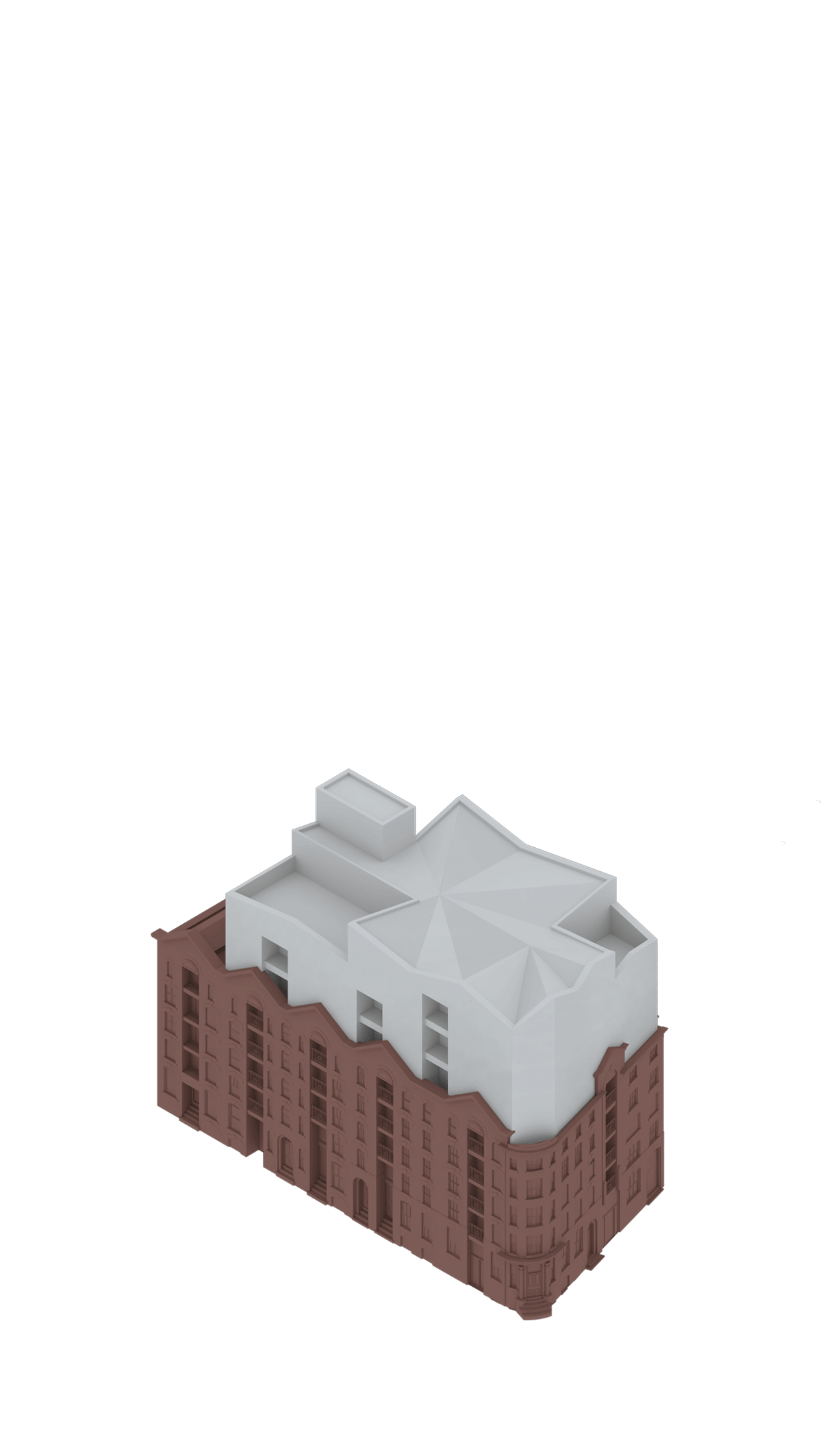
The design approach carefully considered the impact of the scale and mass of the proposed extension when viewed from the surrounding streets. The design approach articulated the mass of the rooftop extension through a deliberately broken envelope; deep recesses combined with a dynamic roofscape. Following an iterative design process, the selected form sacrificed built footprint to ensure an autonomous, reactive form in dialogue with the setting.
The organic tones of the Cor-Ten steel cladding to the extension complement the brickwork of the existing building, and conceptually link to the iron which underpins the fireproof construction of maritime warehouses; their heavy brick exteriors concealing frames with iron columns within.
The dynamic nature of Cor-Ten steel means that there is variation across the elevation, panels change in tone responding to the weather conditions, but yet are stable and gradually mature in appearance. The panels are inherently reactive and not used elsewhere in this context, helping to amplify this gateway site in a manner complementary to the character of the existing building.
The proposed development seeks to celebrate its setting as the gateway to the ‘golden triangle of punk’ by providing a dynamic formal response to the existing building, and by hosting the site for a public artwork, displaying recognition of the building’s former operations and cultural legacy.
